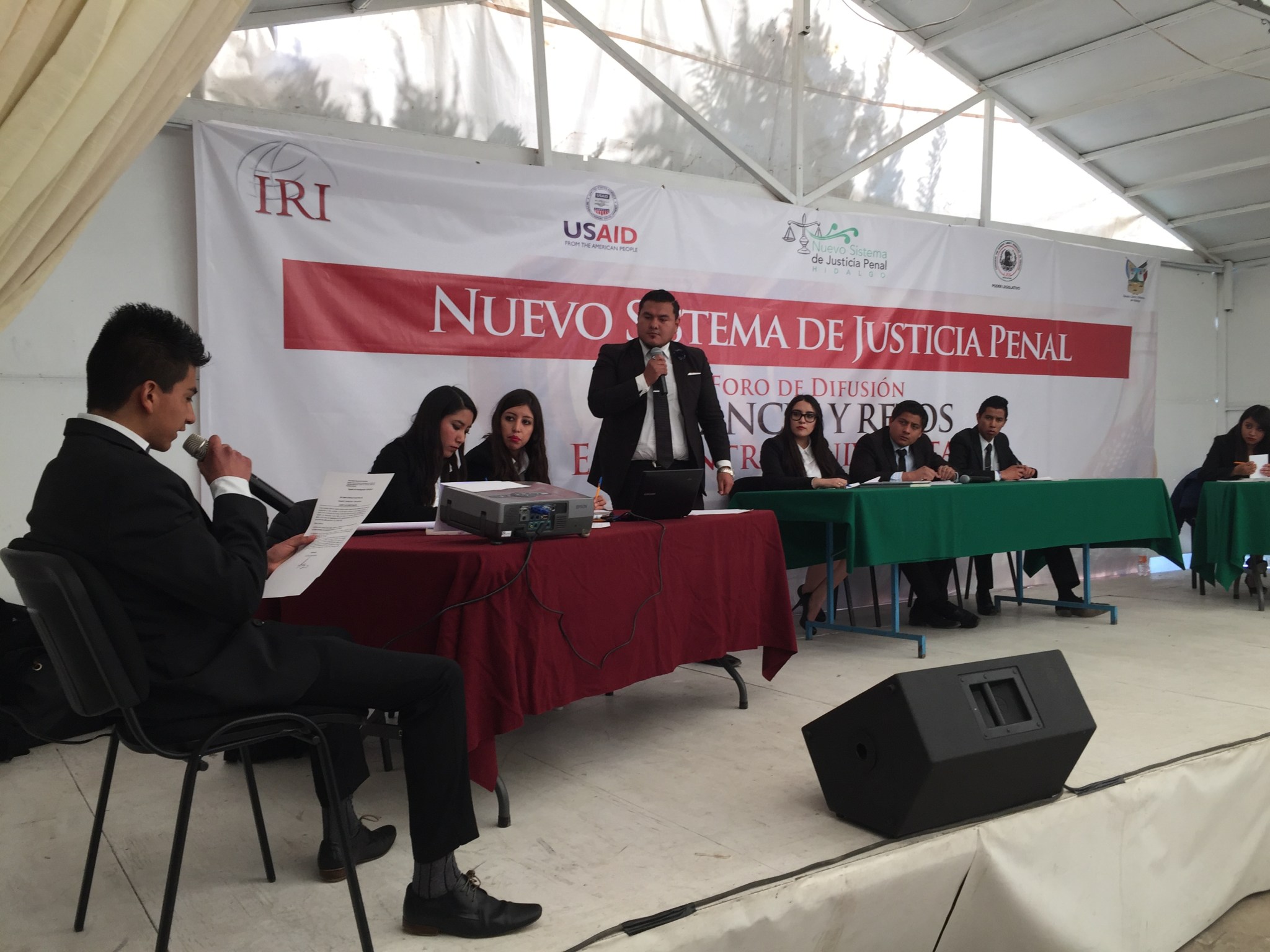
Every year, courtroom dramas like Law & Order provide a basic understanding of the U.S. justice system to millions of Americans.
Despite their fictional and sensationalized form, these programs give citizens a snapshot of pretty much what really happens inside a typical American courtroom—valuable information in case they ever face problems that require a trial.
Law & Order Mexico, can’t be found on any channel—mainly because no such TV drama exists in Mexico. And despite the adoption of an extensive new criminal code and oral trial procedures, an alarming number of Mexicans do not know what happens inside a courtroom. In 2008, President Felipe Calderón and Mexico’s congress approved judicial reforms that moved Mexico’s courts from lawyers’ offices to real courtrooms and from a variant of the Napoleonic inquisitorial model to the British adversarial one. In the new system, the accused are presumed innocent until proven guilty. Judges no longer take on the dual prosecutor/magistrate role. Instead, the prosecutor and the accused’s defense attorney present evidence as equal parties before an independent judge who weighs the evidence of both sides.
Educating Mexico’s diverse population of approximately 120 million on the reform process is a daunting task, but a necessary one, as Mexicans deserve to know their rights and how the new system works. Thus, IRI and its local civil society, university, private sector, and justice system partners have developed innovative ways to get this information before a larger audience using courtroom theater. Under its USAID-funded program, IRI has partnered with such stakeholders as the legislatures in the states where it works; the national level Technical Secretary of the Coordinating Council for Implementation of the Criminal Justice System (SETEC); municipal governments; universities; and the Mexican Business Chamber (COPARMEX) to organize public trial simulations in different judicial districts and municipalities.
The events begin with a verbal introduction to the new justice system, followed by a drama in which a judge, prosecutor, defender, members of the police force, a victim and someone representing the accused simulate the oral proceedings. Like American TV, viewers can see how different actors may interact in a trial, the principles of presenting evidence, and what types of arguments are permitted. IRI typically invites justice system experts to offer commentary at these events. So far, IRI has held 24 regional forums in Hidalgo, with 5,814 citizens attending. On one occasion, a university broadcasted the event live on their webpage for those who could not attend. In addition, IRI has partnered with the Tigres (Tigers) soccer club of Nuevo León, which publishes informative articles in its sports programs handed out at games, reaching more than 2 million citizens so far in promotional material and over Tigres social media.
IRI programs and methods in Hidalgo and Nuevo León states are helping fill a critical knowledge gap on justice system reforms. Moreover, the Mexican government has noticed. SETEC, the federal body that oversees implementation of the reforms has commended IRI and has expressed interest in adopting IRI’s communications toolkit used to disseminate information in Nuevo León and the methodology employed in the Hidalgo courtroom theaters to boost awareness in other states. Thus, until the day that Mexican television can develop compelling police and courtroom dramas that model what law enforcement and judicial procedures should look like, IRI-designed programs will be the mainstay in educating the public on what to expect.
Top